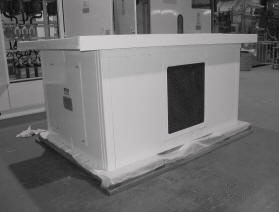Neutral Grounding Reactors for Generators
Neutral grounding reactors will reduce line-to-ground fault currents and circulating 3rd harmonic currents, especially when generators of different designs are operated in parallel. For more details, refer to Application of Neutral Grounding Reactors for Generators.
- The line-to-ground fault current contribution from a generator may be higher when it is operated in parallel with another generator than when it is operated as an isolated generator. This may result in excessive currents for circuit breakers and excessive forces in the generators during a single line-to-ground fault. The use of a generator neutral grounding reactor or reactors can address this issue.
- Also, each generator can produce some small amount of third harmonic voltage, generally in the range of 0.5% to 5%. The amount of third harmonic voltage is determined by the design of the generator, specifically the pitch of the generator windings. Based on the difference in the two voltages and the zero sequence impedances of the generators, a third harmonic current will flow between the generators. These currents can be as high as 50% to 100% of the generator rated currents. Generally, limiting the third harmonic phase currents to < 5% of the generator ratings is acceptable. A relatively easy solution for the high third harmonic current is to insert a neutral grounding reactor in the neutral of one or both generators.

The key design criteria for neutral grounding reactors for generators are to limit the third harmonic current, to limit the single line-to-ground fault current, and to ensure that the generators are effectively grounded. Key references are listed in Design of Neutral Grounding Reactors for Generators.
